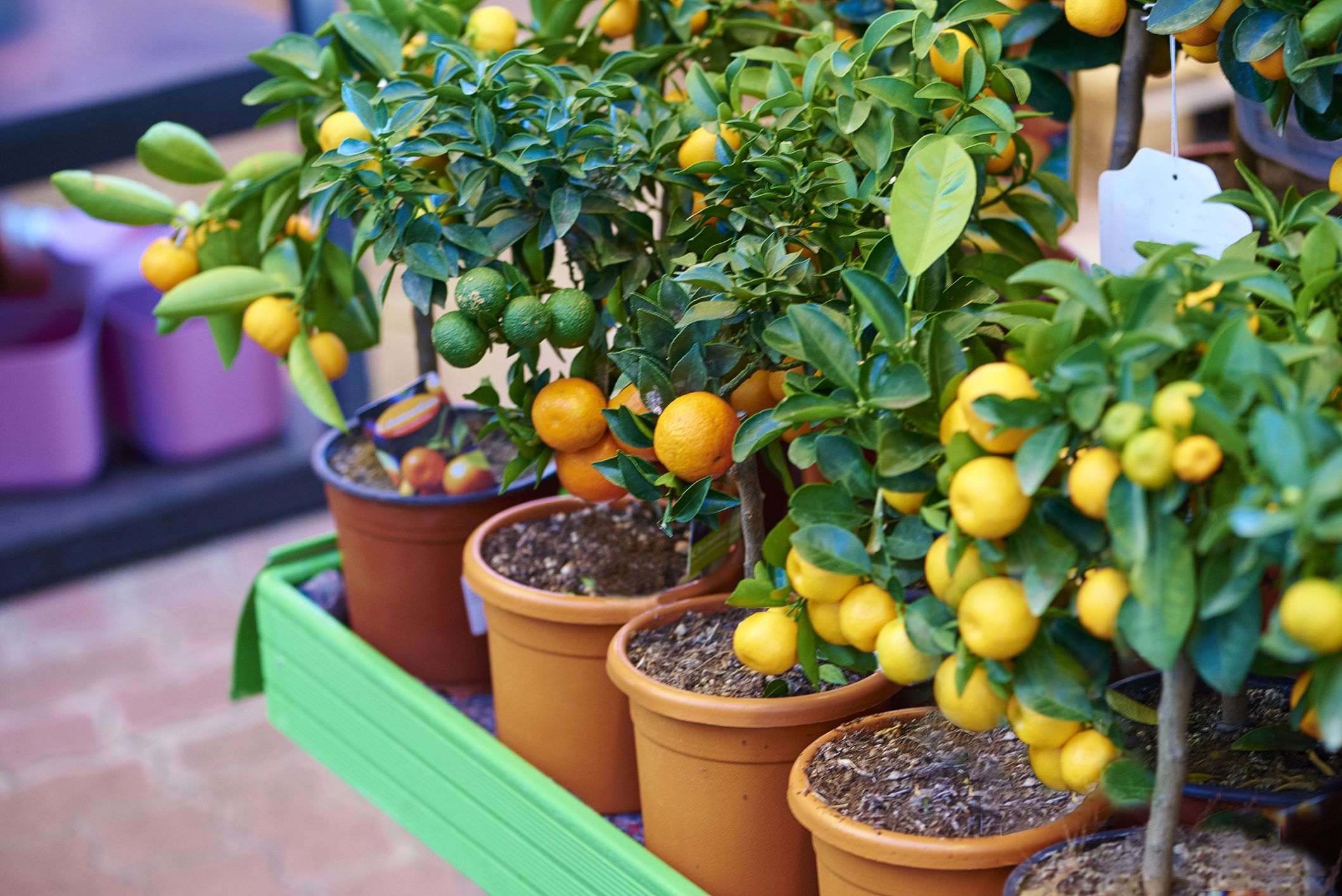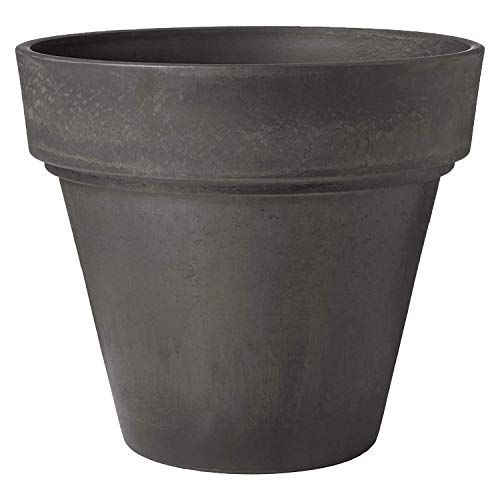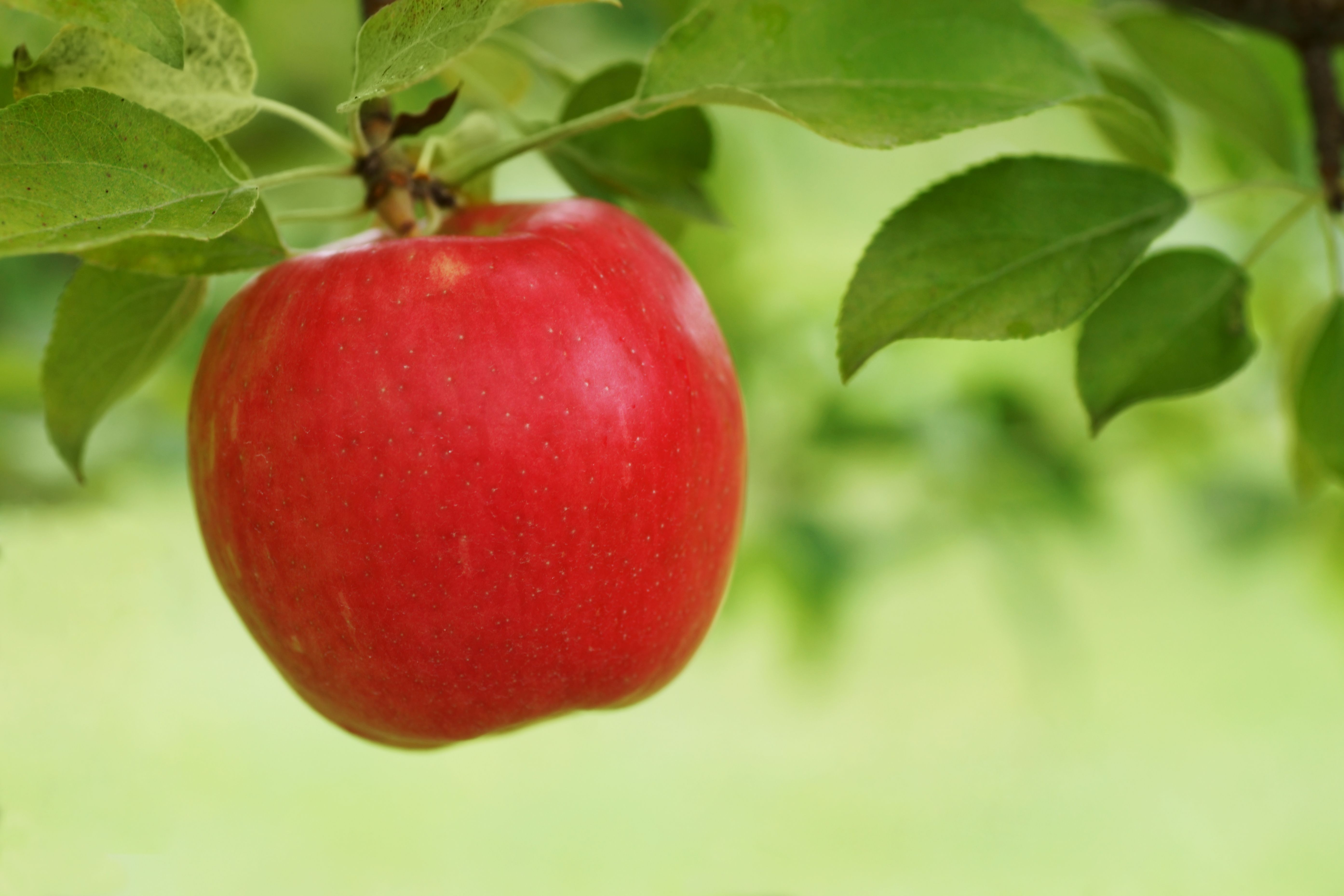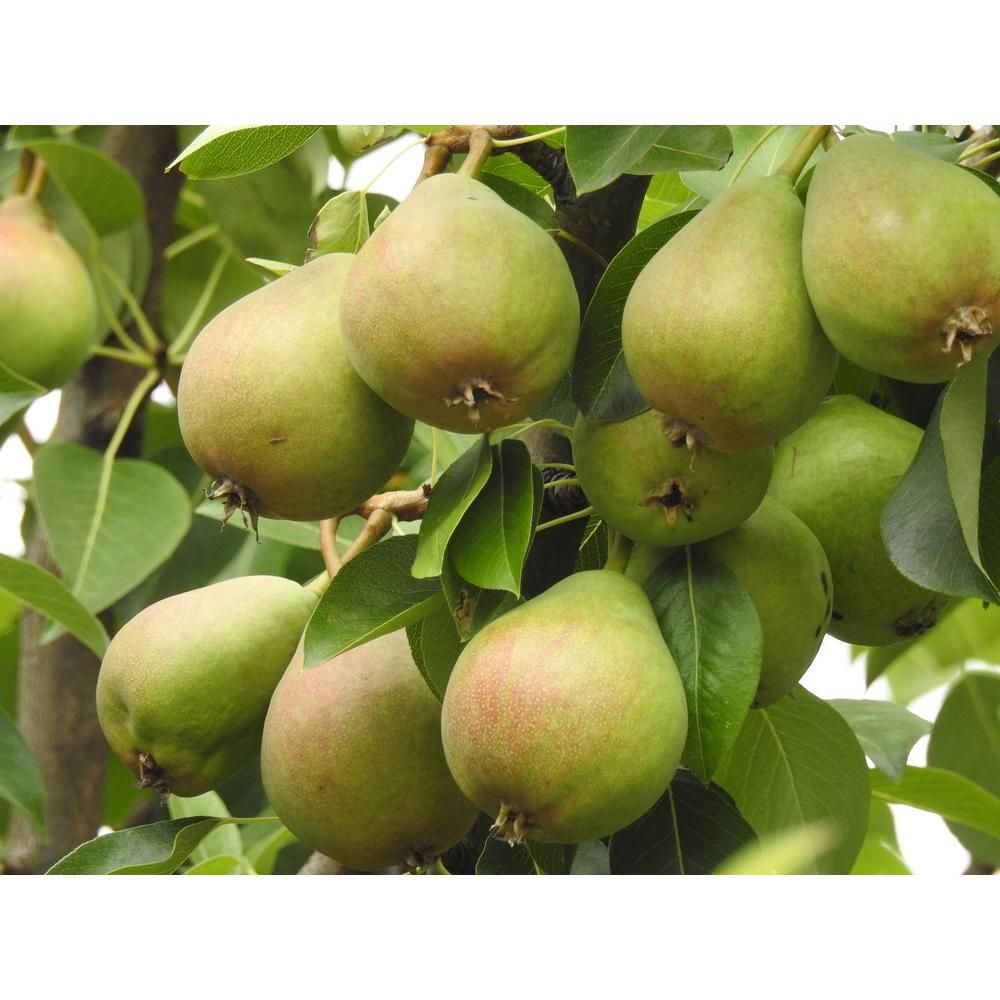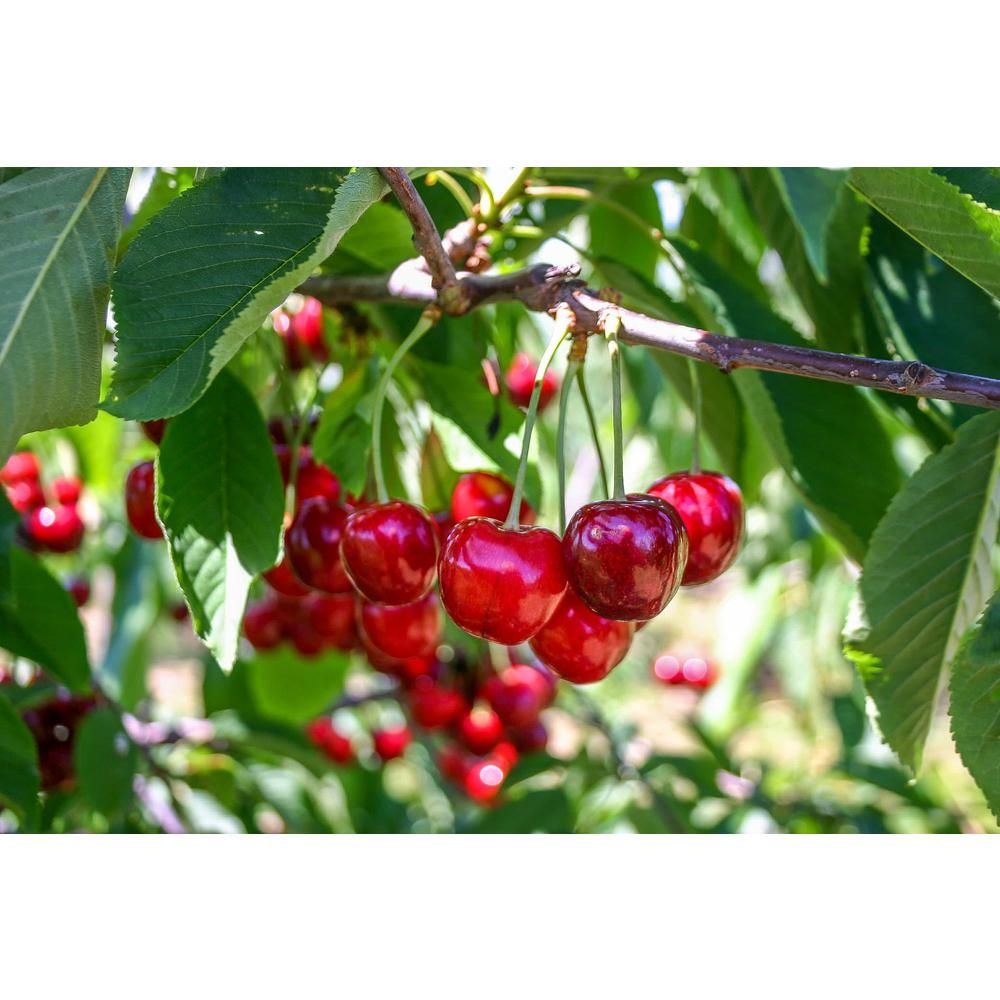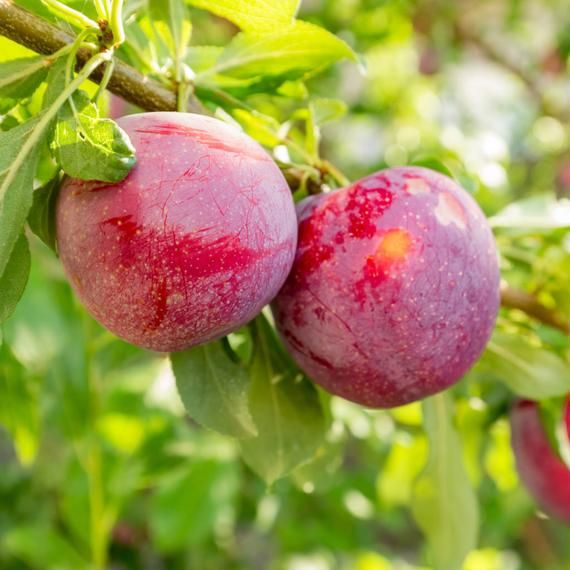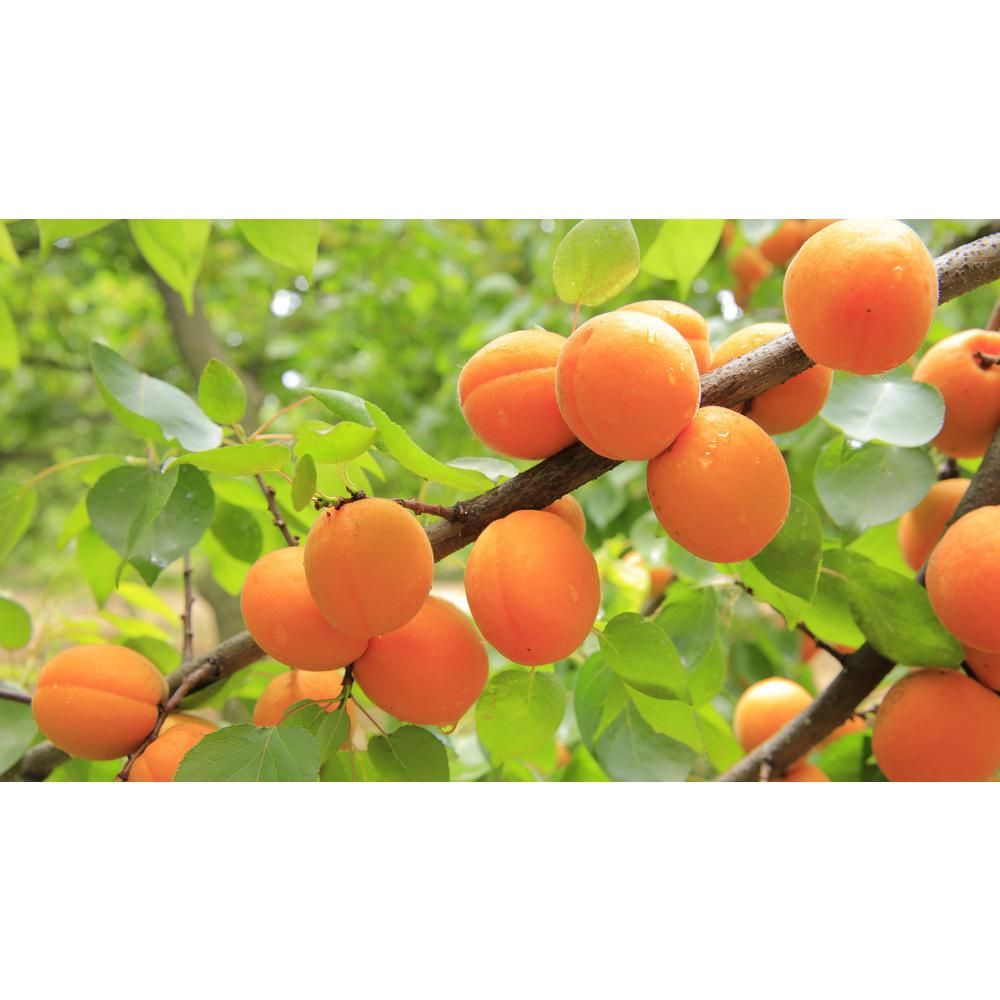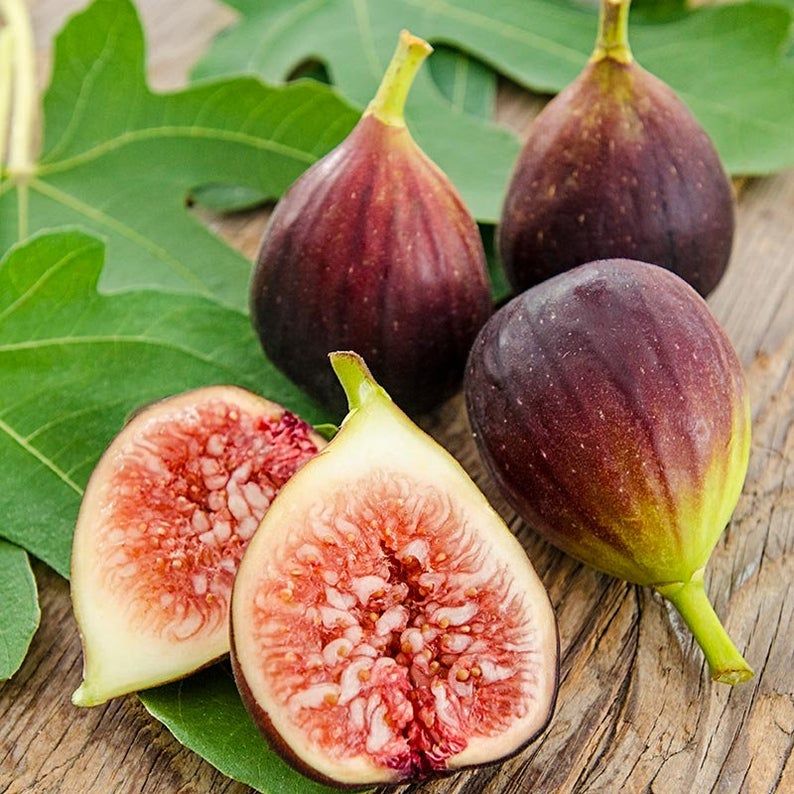8 Fruit Trees You Can Grow Right on Your Porch
You don’t need acres of farmland to have your own orchard.
With their fragrant flowers, verdant foliage, and sweet harvest, fruit trees are the ultimate garden multitaskers. They attract beneficial pollinators and provide produce that’s even fresher than your farmers’ market haul. Even better, almost every aspiring gardener can own one, whether it’s in a sprawling backyard, on a patio, or tucked into the corner of a city balcony.
Certain varieties of apple, pear, peach, plum, apricot, and fig trees remain a manageable size while still providing a bountiful harvest. You can even espalier their branches into decorative shapes to line a terrace or wall. Get the full run-down on growing your own fruit tree below, and start dreaming about all of the tarts and pies coming your way.
How to Choose a Fruit Tree
Fruit trees are good in pots as long as they are grown on a rootstock — any specialist supplier can help you select the right one for your balcony if you are unsure.
Always check with suppliers to see if you need more than one tree to ensure good pollination. Some fruit trees, such as cherries, apricots, and peaches, are self-fertile, so you will get fruit with only one tree. Others, such as apples and pears, need a partner nearby to ensure pollination. If you have room for only one apple or pear tree, a «family» tree, in which three varieties have been grafted onto one rootstock, is ideal.
How to Plant and Grow Fruit Trees
You can grow fruit trees in pots at least 1 foot in diameter and 1 foot deep. Galvanized dustbins come in the ideal size, look surprisingly elegant, and cost fairly little at hardware stores. Heavier options include halved wooden barrels or terracotta pots, while for super-lightweight versions consider plastic planters or rubber Tubtrugs. Drill drainage holes into the base if they don’t already have them.
You will also need to anchor the tree to some type of support, as a fruit tree in full leaf can really catch the wind. Since fruit trees will live for many years, it’s best to plant them in a soil-based potting mix that releases nutrients slowly. Place the trees in a sunny spot to get a really good, sweet crop.
Feed potted fruit trees every two weeks from blossom time to mid-autumn with a high-potash feed such as liquid seaweed and keep them well watered. It’s a good idea to mulch the surface of the soil (with shingle or coco shells, for example) to keep moisture in. The traditional time to plant fruit trees is in the dormant season from mid-fall to early spring, though you can pick up potted trees all year round. The pruning required varies depending on the form and type of fruit tree; it’s worth buying from a specialist supplier who will provide detailed instructions.
Apple Trees
It’s the quintessential orchard fruit that can grow as a bush on a rootstock or as an espalier, U-shaped cordon, or double U. For some delectable snacking varieties, go for Gala, Fuji, and Honeycrisp, all of which will pollinate each other, or try Jonagold, Pink Lady, Ashmeads Kernal, or Cox. Good cooking varieties for all of your baking needs (including apple pies, cakes, and more) include Gordon, Liberty, and Sierra Beauty.
Pear Trees
A ripe pear is a wonderful thing, but since pears flower early, late frosts can damage their crops. To be on the safe side, cover the branches with fleece if they’re in blossom when a frost is forecast.
Pears can be grown as a bush on a rootstock or as a cordon, espalier, U-shaped cordon, or double U. Good dessert varieties include Bartlett, Moonglow, and Doyenne du Comice.
Cherry Trees
Modern cherries are self-fertile, so you only need one tree to ensure a good crop — if you can keep the birds off, that is. Netting may be a necessary defense as the fruit ripens. Expect beautiful blossom and lots of fruit when the tree is established. Grow cherries as a bush on a rootstock or as a fan against a warm wall.
Good varieties include Lapins and Stella. If you have a shady, north-facing wall, a morello or acid cherry will thrive as a fan, producing tart cherries that are excellent when cooked.
Plum Trees
These accommodating trees deliver heavy crops with very little asked from you in return. Pruning is minimal (and certainly should never be attempted except in summer, to avoid fungal infection), and most are self-fertile.
The only thing they demand is thinning of developing fruits. Otherwise, plum trees tend to produce far too many plums one year, followed by nothing the next. Thin plums in midsummer so they’re about 2 inches apart. Either grow plums as a bush on a rootstock or as a fan. Try greengages for their unique buttery texture and sweetness.
Peach and Apricot Trees
Once you’ve tasted your first ripe peach or apricot straight from your own tree, there’s no going back. Such experiences have to be repeated, and you’ll go to no end of trouble to do so. As with all container fruit trees, make sure you buy a tree with the suitable rootstock. A good peach is Bonanza; try Pixzee or Pixie-cot for an apricot. All of these can be grown as freestanding trees in pots and need little pruning. Alternatively, they can be grown as fans.
Both peaches and apricots are hardy when dormant over winter, but since they blossom early in the spring, the flowers are susceptible to frost damage. Bring the tree inside when in blossom if frost is forecast, or cover it with horticultural fleece if it’s trained against a wall.
Although self-fertile, both trees can benefit from a bit of help with pollination to ensure you get a good crop: When the flowers are open, dab the pollen gently with a soft brush and rub it onto the surrounding flower. Peach leaf curl is a nasty fungal disease, so if you can find a variety that claims resistance to this disease, buy it.
Fig Trees
A sprawling, fan-trained fig tree in a pot is a majestic sight, and the hand-shaped leaves release a «figgy» scent if you brush past them, particularly on hot days. And then there are the incredibly succulent fruits, swelling through the summer until they all but burst open to reveal their sweet, dark flesh.
Figs are an ideal choice for growing in pots because they prefer to have their roots confined, and they’re easy to train into fan shapes by tying branches against a warm wall.
To ensure a crop where your climate is cool, protect the baby fruits over winter by tying sleeves of plastic bubble wrap loosely around them, making sure to leave them open-ended so that air can still circulate. Any fruits that are larger than pea size by fall should be removed, and pinch out the growing shoots of the tree in early summer so that only five leaves remain per shoot.
Brown Turkey is a reliable variety with delicious, purple-fleshed fruits. Other good ones to try are Panachee and Black Mission. Plant in soilless potting mix or soil-based mix in a pot no smaller than 18 inches in diameter. Place in a sunny, sheltered spot, keep well watered, and feed with liquid seaweed every two weeks throughout the growing season.
Источник
Fruit tree guilds and edible companion plants (Apple, Pear, Peach, Plum)



I’ve been reading both here and elsewhere on the web to come up with a list of good guild options for various fruit tree varieties. It seems there are more articles on apple tree guilds than anything else, which is why that list is longer.
Below is what I’ve come up with so far. All of the plants are listed with a tree that is a pairing someone recommended online. (so, for example, if someone said nasturtiums were good for apples, I didn’t automatically apply that to the other fruit trees)
Also, these lists are by no means extensive. In fact, I’ve removed most plants that are extremely poisonous or invasive (I have kids and pets around).
I’ve toyed with the idea of doing guilds where every plant around the tree is edible, so that is what I lean toward, but have included a few that are highly recommended that aren’t edible.
If you have any suggestions about what I’ve got (I definitely don’t want anything that will bother the trees) or if you have additions to recommend (as I mentioned, I’m mostly looking for edible guild plants, but not always, and nothing that will take over the yard), by all means, I’d appreciate feedback.
Apple tree guild:
Nasturtium
Garlic
chives/onion
strawberry
borage
yarrow
chamomile
basil
white clover
bee balm
comfrey (inedible)
daffodils (inedible and poisonous)
Pear tree guild:
chamomile
Nasturitum
borage
comfrey (inedible)
daffodils (inedible and poisonous)
Plum tree guild:
garlic
chives/onion
nasturtium
strawberry
chamomile
comfrey (inedible)
Peach tree guild:
garlic
chives
onion
strawberry
yarrow
comfrey (inedible)






My formula for a guild on a city lot
Support System
N-fixer (dutch clover, etc)
Insectory/Pest Control (Mint/Thyme family)
Soil Pest Control (Onion/Garlic Family)
Soil Aerators/Miners (Daikon Radish, Comfrey/Borage Family)
Produce
Mushroom (Oyster, Wine Cap on straw/woodchip)
Runners (Strawberry, squash/melon family)
3-5ft berry shrub not in the rose family (currant family, blueberry family, etc)
Main fruit, most likely in the rose family (plum, cherry, peach, apple, pear, quince)
Iterations are fine, we don’t have to be perfect








With the daffodils, I have little ones, too. One of the first things they learn is «daffodil is BLEGH!» Any picture we see of it is «blegh» any time we see them outside, I say, «daffodil is blegh!» («Blegh» is our word for things we don’t eat). My son figured out by the age of 1.5 that dandilions were «om-y-nom-y» and daffodils are not. This spring, my daughter will be walking around (she’s one year old now) and I know I’ll have to watch her like a hawk to make sure she doesn’t try to eat thsoe, or the foxgloves that grow like weeds around my property.
As for things I’ve got growing around my fruit trees, green onions is one that is doing surprisingly well. Hopefully since it’s in the same family as garlic, it’ll help keep away disease and pests and deer. But, even if it doesn’t, it’s growing really well, and my family LOVES green onions. I plan on picking up some more green onions at the grocery store and encircling all of my fruit trees with them.
When I first looked into guilds, I spent a lot of time searching for guilds specific to each type of fruit. Especially with fruits like peaches and cherries, I just didn’t see much specifics. It looks like most fruit trees just get treated the same when it comes to companion plants (e.g. «if it works for apples, it’ll work for plumbs»). I don’t know how true this is, though.
OH! In the Permaculture Orchard video, Stefan Sobkowiak talks about how he uses hostas as an edible ground cover around his trees. Like comfery, their big leaves shade out weeds and grass. But, unlike comfery, they are edible (the young shoots taste like asperagus, I’ve heard). I planted some around my apple and peach tree this summer and I’m hoping they will multiply quickly!







S Bengi wrote: My formula for a guild on a city lot
Support System
N-fixer (dutch clover, etc)
Insectory/Pest Control (Mint/Thyme family)
Soil Pest Control (Onion/Garlic Family)
Soil Aerators/Miners (Daikon Radish, Comfrey/Borage Family)
Produce
Mushroom (Oyster, Wine Cap on straw/woodchip)
Runners (Strawberry, squash/melon family)
3-5ft berry shrub not in the rose family (currant family, blueberry family, etc)
Main fruit, most likely in the rose family (plum, cherry, peach, apple, pear, quince)
I don’t want to hijack the thread, but does planting mint actually discourage pests?
I’m still just scratching the surface of understanding guilds. (I put in several fruit trees this year but haven’t established any real guilds yet. I’d like to work on that in the spring.)





Permaculture. picking the lock back to Eden since 1978.
Pics of my Forest Garden






That’s useful, thank you. I like the idea of having herbs do useful things under fruit trees! If I personally have to eat every herb I plant, I won’t plant more than about four varieties, but if they’re serving some other useful purpose, that would be excellent.
I’m wondering how closely one should plant to a fruit tree. Older threads here don’t seem to have many pictures anymore. I wish I could better envision what a guild should look like. There are some helpful things on YouTube but sometimes I feel more confused the more research I do. I suppose it varies depending on climate and age of fruit trees, but I would like some clearer ideas.
My personal plan is to start simple, planting outwards from the drip ring, with peas and some herbs and small veg. I hope I’ll figure out what else to do after that.


Iterations are fine, we don’t have to be perfect



Nicole Alderman wrote: OH! In the Permaculture Orchard video, Stefan Sobkowiak talks about how he uses hostas as an edible ground cover around his trees. Like comfery, their big leaves shade out weeds and grass. But, unlike comfery, they are edible (the young shoots taste like asperagus, I’ve heard). I planted some around my apple and peach tree this summer and I’m hoping they will multiply quickly!
I was going to mention this video, as they are talking about the trees and the video pans across the site, they will pause and point out a bunch of different plants that are mixed in. This orchard is designed around selling the food, and customers walking down the rows to pick what they want, so the layout is designed around that. They based the layout around NAP: Nitrogen fixer like honey locust, Apple, and Pear/Plum. So they alternate their trees to create some distance between similar trees, so pests can’t jump from 1 apple to the next as easily.
Next to the fruit trees are perennial herbs and fruits, like apple or pear also has raspberry, oregano, gooseberry, arugula, thyme, garlic chives, haskap, echinacea, and blackcurrant. This is located in eastern Canada, so part of the planting depends on the site as well. I’m currently in USDA zone 12b, and buying land that’s zone 5b. I doubt much of what survives here would migrate well to a location that actually gets snow.
I’m not quite a lumberjack, but that’s OK, I sleep all night and I dream all day; I’ll coppice trees, I’ll grow my food, and compost poo and pee! With a well and off-grid solar, it’s a permies life for me! https://www.youtube.com/watch?v=FshU58nI0Ts











Lori Whit wrote:
I’m wondering how closely one should plant to a fruit tree. Older threads here don’t seem to have many pictures anymore.
I think the spacing really depends on how mature the fruit tree is. A young tree might do better with mostly mulch to supress weeds so it gets more nutrients (at least that’s what I was told), but a older one can have thigns growing 6 inches from the trunk without any problems.
As for the pictures, I think that because people used photobucket to embed pictures. and then photobucket made people pay to see pictures hosted on their site. We encourage people to host their pictures here on permies by attaching them, that way they’ll not be taken down.
I don’t want to hijack the thread, but does planting mint actually discourage pests?
I know they detur four legged pests pretty well, and fruit flies don’t like them, either. We used to have our compost constantly eaten and disturbed by deer and other critters. Then my husband started drinking bags of (tbsps) of mint tea a day. The left over leaves, of course, went in the compost. Suddenly, nothing was eating or disturbing it! We also once had a fruit fly infestation in our house (worst thing ever). The flies were everywhere, even coming out of the toilets. But, they never went in the mint leaves. Now, they were flying above it and near it it, but not in it. So they weren’t repelled by it, but they also weren’t interested in it. If the dead leaves have this effect on pests and deer, I’m going to assume the live plants would, too.

Lori Whit wrote:
.
I don’t want to hijack the thread, but does planting mint actually discourage pests?
.
In my experience, it does stop rabbits/rodents from girdling the stems by chewing bark (often human or dog hair or even stinky soap will also work at least short term). It did nothing to repulse aphids/ants (wet weather plague) and red spider mite (dry weather) from mineral deficient (iron?) plums. I did not try spraying mint tea, just proximal planting. Spraying the vulnerable leaves might indeed work, but if you are going to that effort, you don’t need the plants near each other at all.
True mint (Mentha sp.) is too weedy for most people. Keep it constrained in a tub, periodically harvesting shoots (NO roots/runners) to drape among the branches of things you value, to repulse mammalian pests. Or use similar smelling, less weedy Pycnanthemum (mountain mint). Possibly other members of the mint family would work (ground-hugging, weedy Glechoma hederacea, though I sure smell it, does not) though mint and lemon balm are probably the most (partial) shade tolerant conventional mint family crops. Weedy self-seeding, annual genip/perilla will grow in shade, if you like Korean/Japanese food, though I don’t know if it scares bunnies.
It is my understanding that the purpose of daffodils (maybe other Amaryllids in the Deep South) is to repel similar *underground* gnawing damage by things like voles. They sense that it is there, and toxic. But you need a tight ring of bulbs since they aren’t smelly and smell probably doesn’t travel far in dirt.
——— other thoughts on the original topic, rather than answering you:———-
BTW, guilds depend on climate. Neither comfrey nor apples do well in FL. Alley crops of prairie acacia might, but perennial Mexican sunflower (Tithonia diversifolia) is the usual «dynamic accumulator»/biomass generator and locally adapted fruit instead of apples. Indigenous legumes, cowpeas where vines are safe, or pigeon peas are more reliable nitrogen fixers (wax myrtle is fine on woodlots but too big and competitive elsewhere) than clover in areas with negligible winters. Many steppe/prairie species (alfalfa, prairie clover; [Petalostemon/Dalea sp.] non-N-fixing Silphium species & big bluestem grass) are also very deep rooted though not necessarily tap rooted. Unless you have clay, I doubt a taproot would matter. In sunny areas with suitable temperature & rainfall patterns, deep rooted N fixers would seem ideal.
For those who think comfrey is edible, beware that pyrrolizidine alkaloids can irreversibly and asymptomatically (until it is too late) harm your liver, though this usually takes chronic use over many years. I’ve seen studies that show it gets into honey (via pollen; if comfrey is bumblebee pollinated like Mertensia, I wouldn’t worry but I am now worried about Echium vulgare), eggs and milk, but not muscle tissue. Therefore comfrey might have value as fodder for short-lived meat animals like domestic rabbits (or cavies if you live in Peru and it is socially acceptable to eat them), assuming that you are like me and can’t stomach liver. Comfrey IS good external medicine as well as the fertilizer function.


Victor He wrote: I’ve been reading both here and elsewhere on the web to come up with a list of good guild options for various fruit tree varieties. It seems there are more articles on apple tree guilds than anything else, which is why that list is longer.
$10.00 is a donation. $1,000 is an investment, $1,000,000 is a purchase.


Confrey, inedible? Tell that to my mother, she used to serve it up with dinner. Apparently the leaves are a traditional food (and medicine), but then someone extracted a particular chemical and showed that was harmful. «Reductionist blindness» leads people and advisory bodies to draw the illogical conclusion that therefore comfrey is harmful.
Daffodils. When I was about 9yrs and quite evil, me and my friends were in a feud with a rival «gang» from the next village. We heard daffodil was poisonous and figured we could use it! So my friend, to make sure, volunteered to try eating a whole daffodil head. He was a bit ill, nothing serious. (Not that that proves anything, of course.)





S Bengi wrote: My formula for a guild on a city lot
Support System
N-fixer (dutch clover, etc)
Insectory/Pest Control (Mint/Thyme family)
Soil Pest Control (Onion/Garlic Family)
Soil Aerators/Miners (Daikon Radish, Comfrey/Borage Family)
I would add Eleagnus as a great nitrogen fixer as well. Tolerates all kinds of soil as long as they don’t sit in water all the time. Grows fast (lending itself well to the chop-and-drop method of mulching) and sheds leaves that form a natural, weed-blocking mulch in place. Some varieties also have edible fruit (goumi, silverberry, etc.) that can be used for juice, jelly or chicken treats (they LOVE the red, juicy berries I toss out in the yard for them). Plus, when they bloom, they are covered with tiny, creamy white, sweet-smelling flowers that the bees LOVE.
A few words of caution — some varieties are considered invasive and may be illegal in parts of the US. Also, if you aren’t going to chop-and-drop new growth for mulch, a bush can quickly overtake anything planted within 6 — 8 feet of it. You can also cut the long canes of new growth they produce every year as flexible staking and woven/wattle fencing.







Yes I was a bit fazed by how simple and yet complicated fruit guilds seemed to be, and was getting overwhelmed by the quantity of stuff I was reading about them, so this thread is very useful. There’s lots I don’t understand, for example I didn’t know the bulbs had to be in a ring, now I understand why they all say «in a ring», thank you !
I’ll add my amateur contribution in case it’s useful and/or needs correcting !
My first four trees are the most traditional, an apple, a plum, a cherry and a pear, and all rosaceae so if I understand correctly there is some crossover between what’s beneficial to one or another. I won’t be planting peach trees until I’m a bit more sure of myself, we pulled an existing one out because we coulldn’t bear to see the horrible leaf curl which looks like someone’s having fun torturing nature. I’ve bunged some stuff into their planting mounds, bulbs I wanted for spring jollyness and stuff I had in the garden, to be pretty if not known to be useful and fill up some space quickly and stop the cats from digging (have even added turf on the slopes for that, sorry trees you’ll just have to wait till I can replace it with something cat-proof), and am deciding what to sow and add as the spring arrives.
Like you I’ve listed plants I’ve seen suggested or used under each kind of fruit tree, starting with apple because it’s the most documented. So then I’ve put that list into a table with their guild functions in columns, and for each suggested plant I’m trying to tick columns for different functions it performs. I’ve done a «nbval» in another column which allows me to see how many functions each plant performs (which helps me to understand why Comfrey is so popular !). Then I’ll be able to see which functions are missing and which plants I can be choosy about. For my own reasons I’ve made more categories than are listed above, they may be of some interest to you :
— Pollinators (nectar and or pollen)
— Birds / Insectary — auxilliaries
— Repellant / confuses
— Sentinel (not sure what «sentinel» means — maybe underground «repellant» or maybe plants like nasturtiums that attract unwanted creatures away from our fruit trees ?)
— Nitrogen fixer
— Other dynamic accumulators (I separated this function because I’m going to need more than just nitrogen fixers — even if there’s some doubling up with «mulch» or «taproot»)
— Grass suppressing — aleopathic or groundcover
— Mulch
— Decompact / Tilth
— Tap root (specifically)
— Edible or medicinal
— Chicks (edble by or otherwise useful to my future chickens if not to humans)
— Windbreak
— Evergreen hedge /privacy
The last two functions are needed near my apple tree because it’s near the edge of my garden.
(I’m also planning to check out some stuff on functions I saw online free for permaculture design, now that it will start to make more sense to me.)
I’ve added a few more columns to help me decide :
— «Family» as I know I want members of certain families under my fruit trees. For example, in Europe apples and pears are attacked by a moth, Cydia pomonella, so I know I want plenty of Apiaceae nearby to host some of their enemies. I’ll be planting something from the wonderful mint family too, though it won’t be mint, which grows wild in large swathes here.
— Plants that have been observed as occuring in their natural biotope (via the impressive French «Permaforêt» site http://permaforet.blogspot.fr/p/biotope.html)
— Plants that are aleopathic to them or otherwise undesirable
Then I’ll choose according to where I want what, other plants, how attractive it is to me, light and shade and so on.
I’m bound to make some mistakes but it will all be a good learning experience !
Источник
